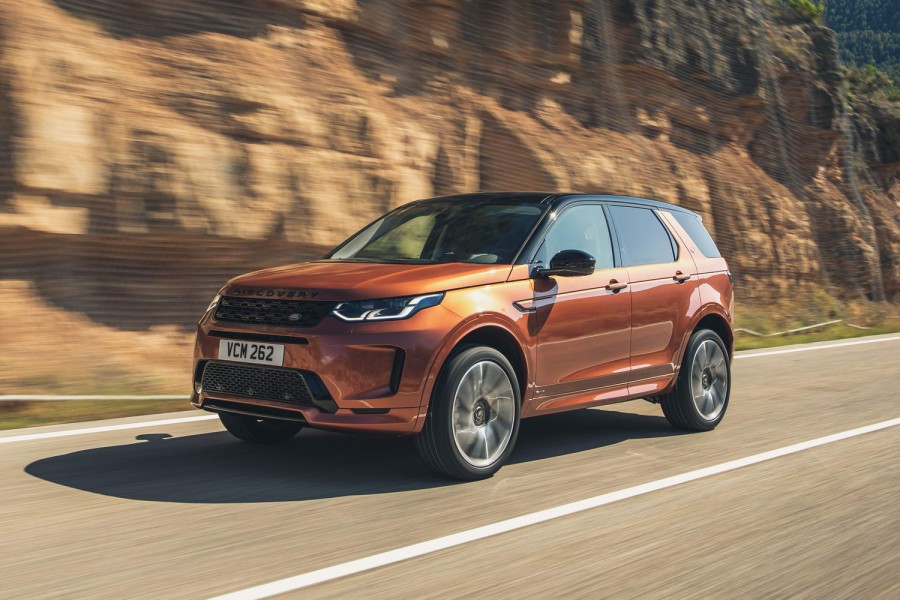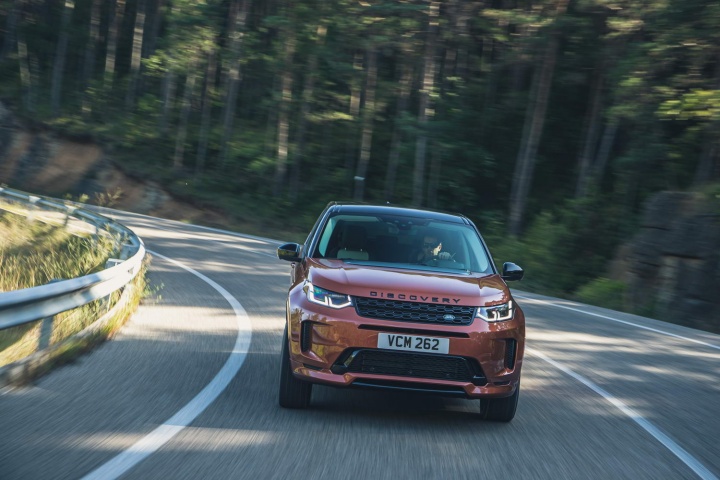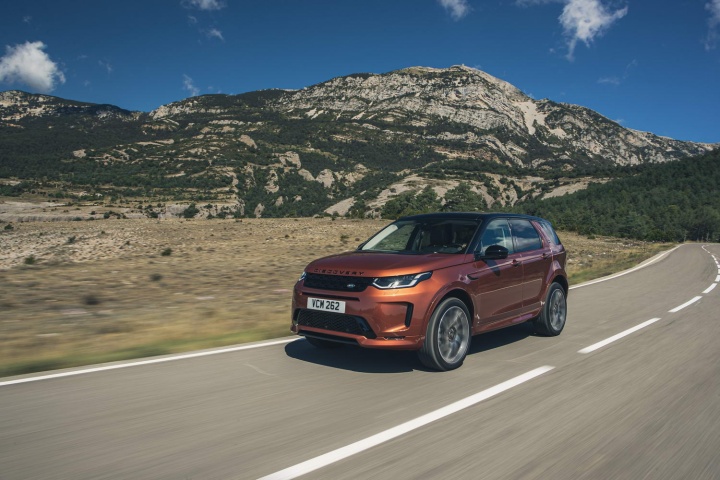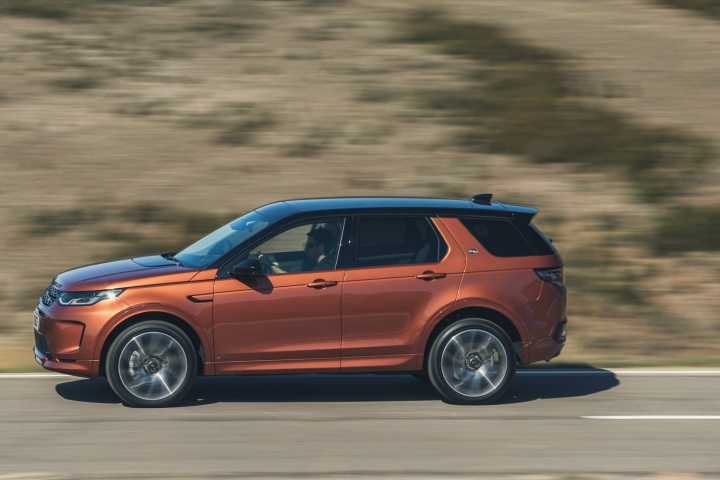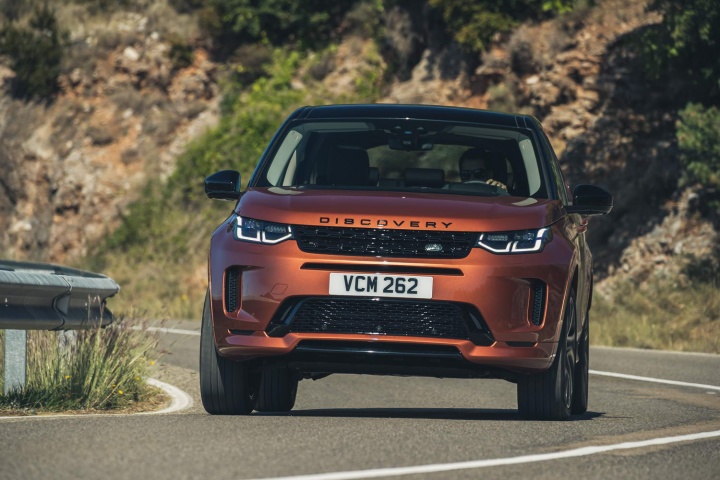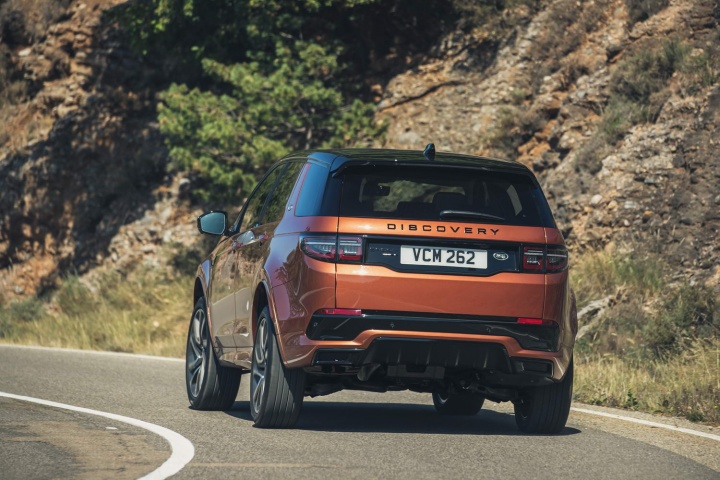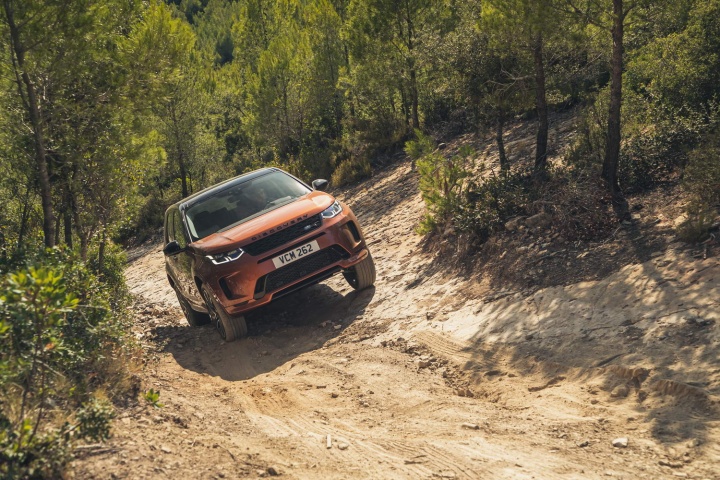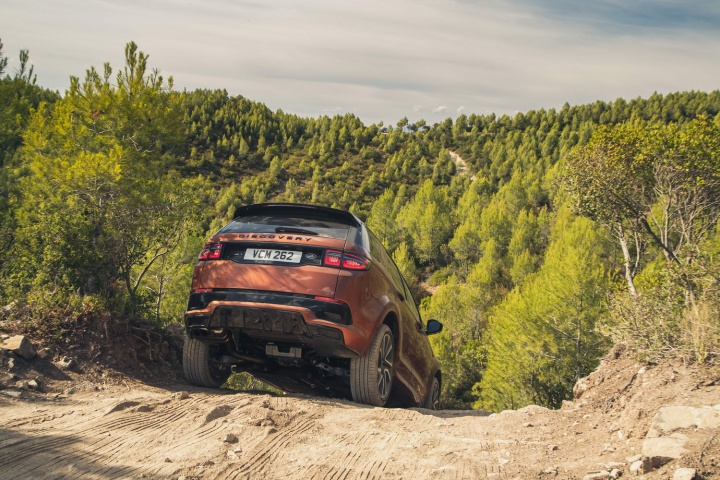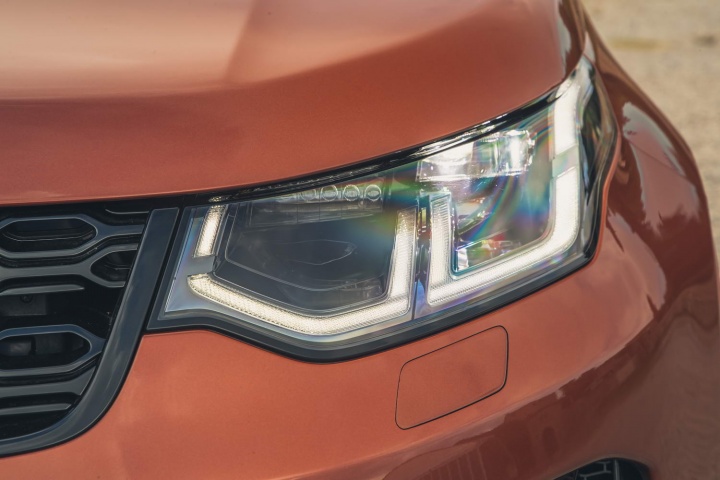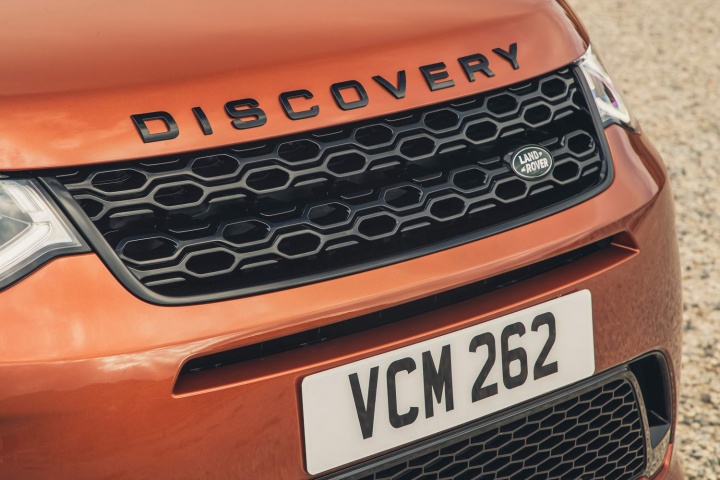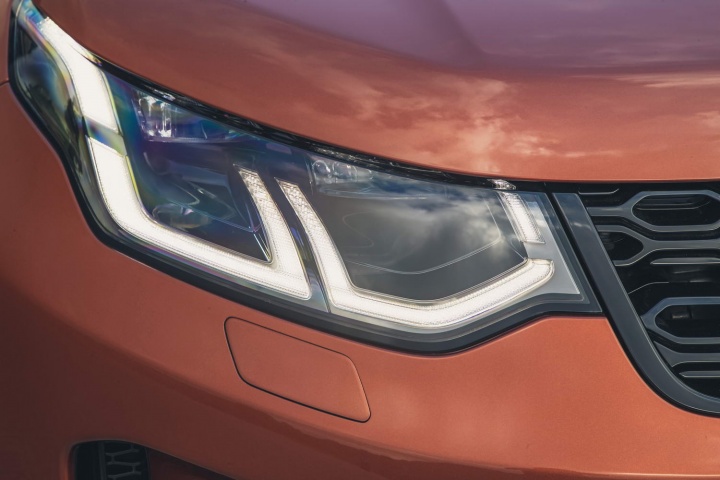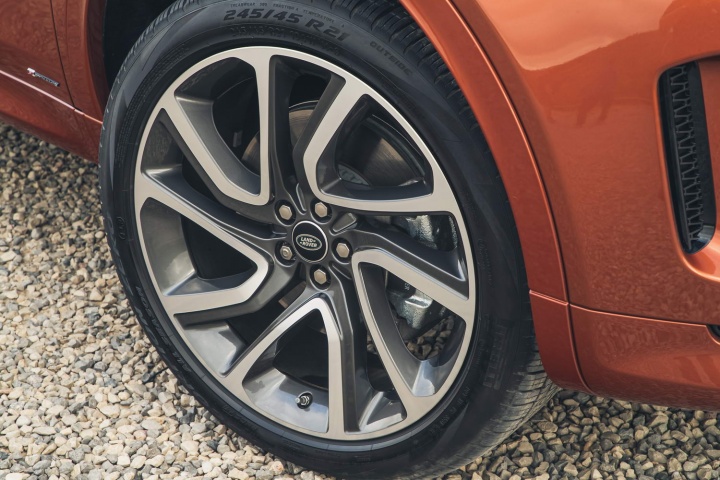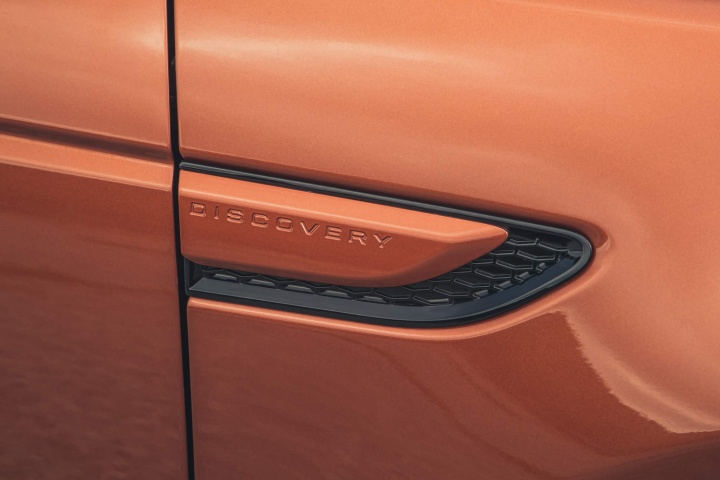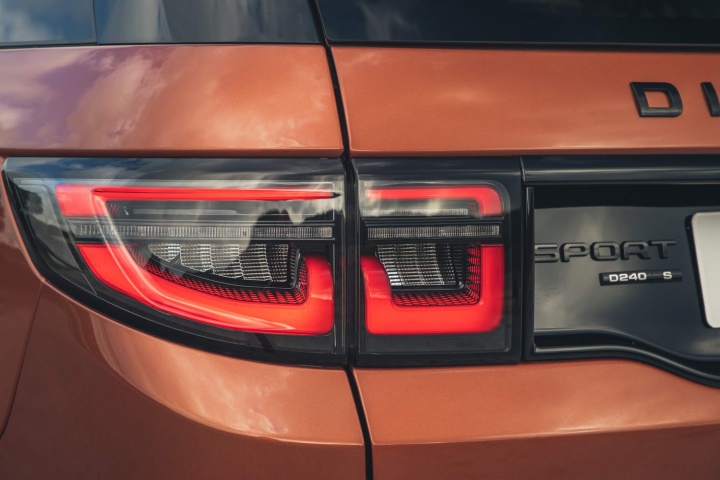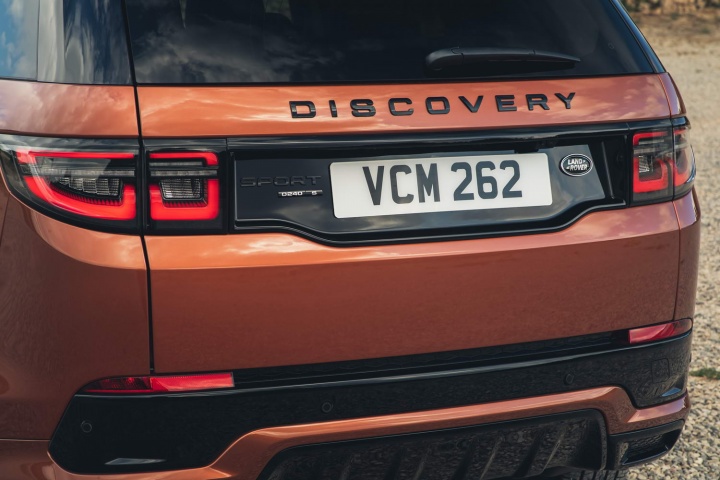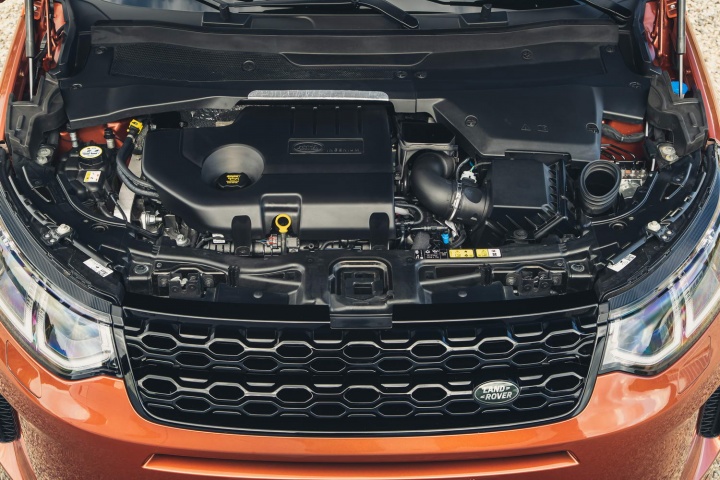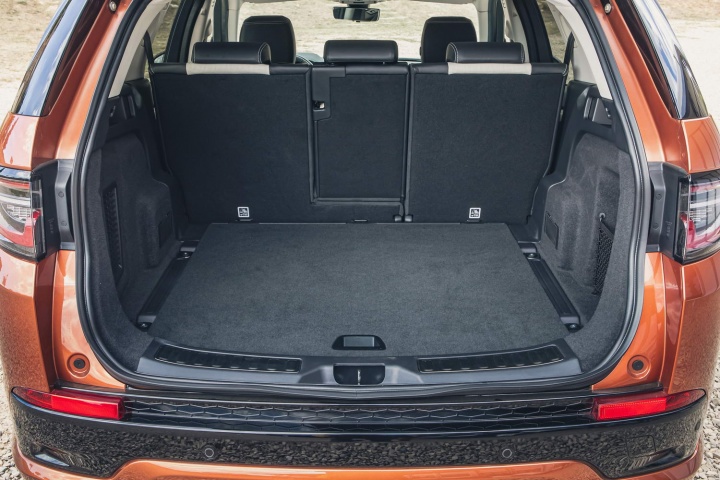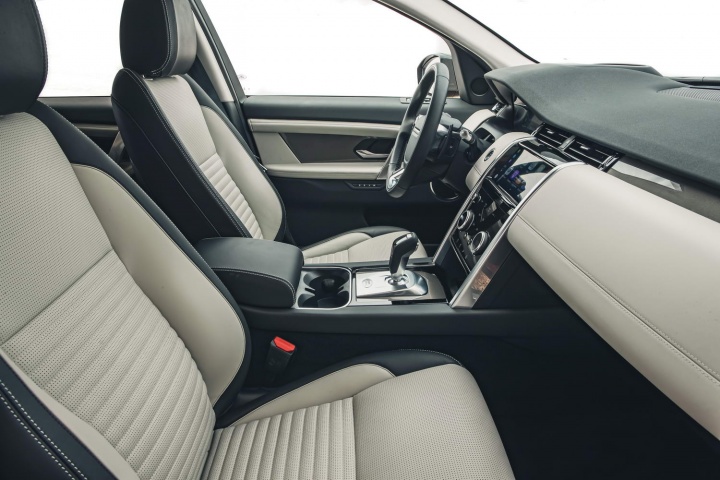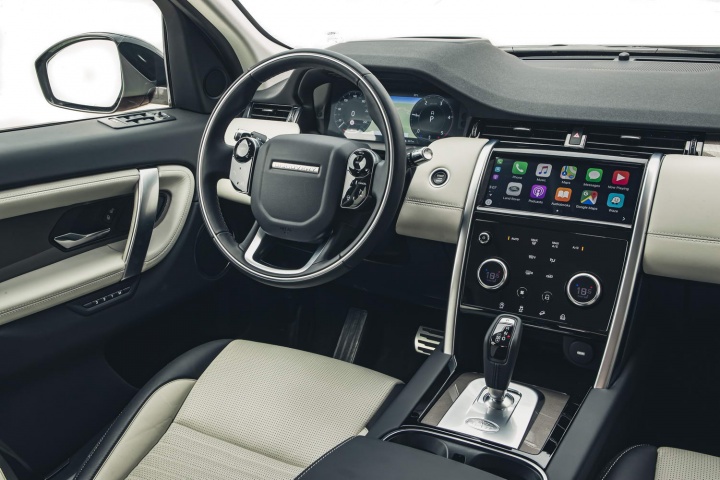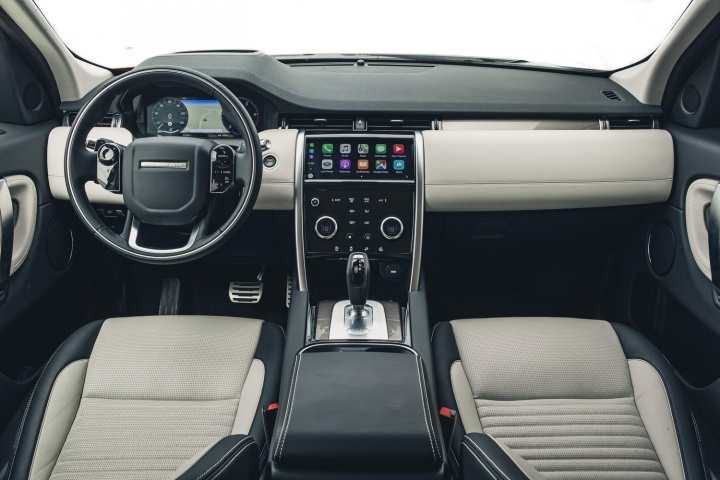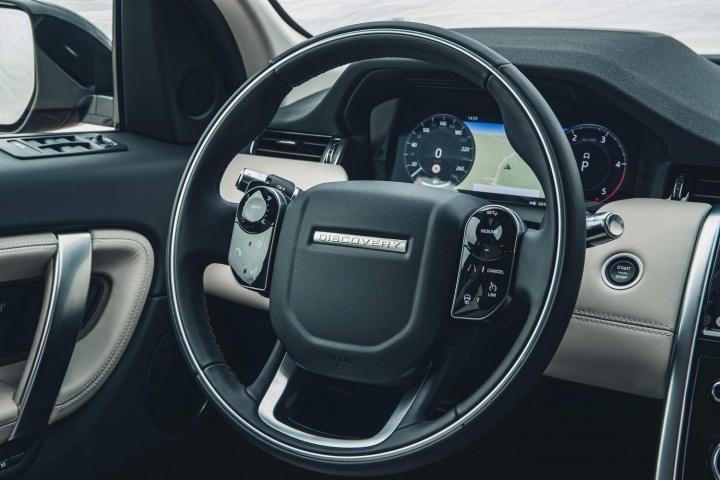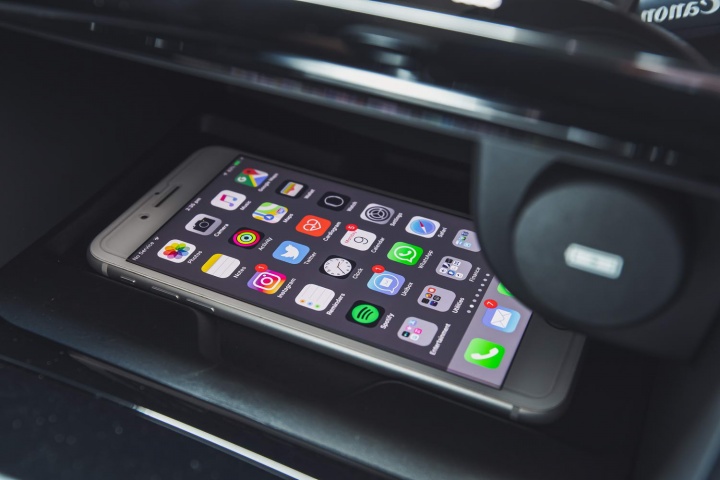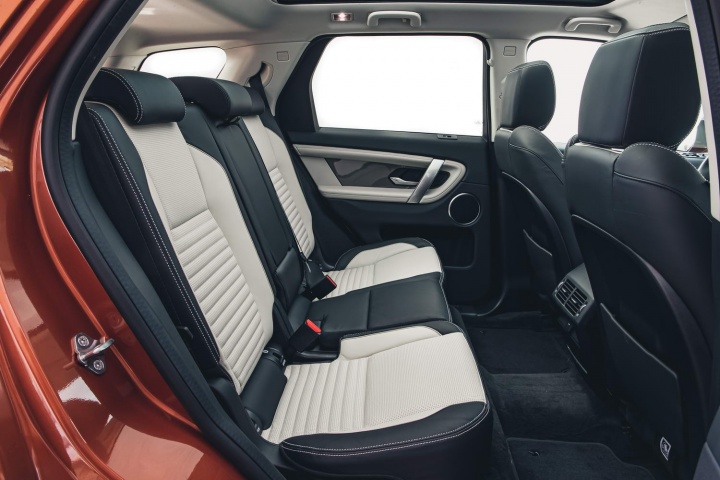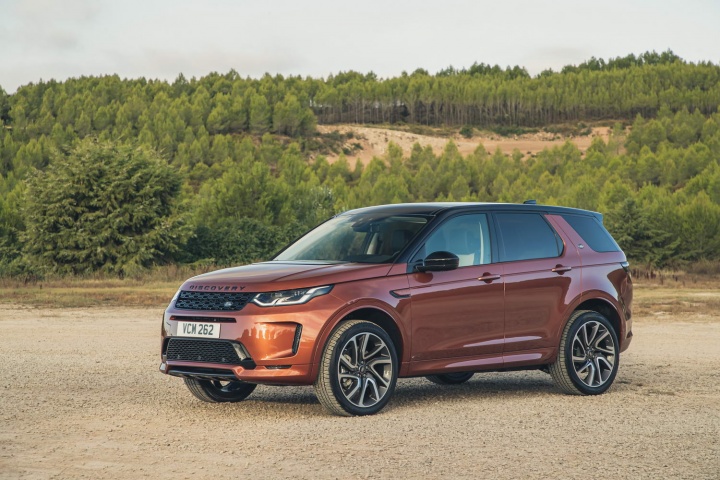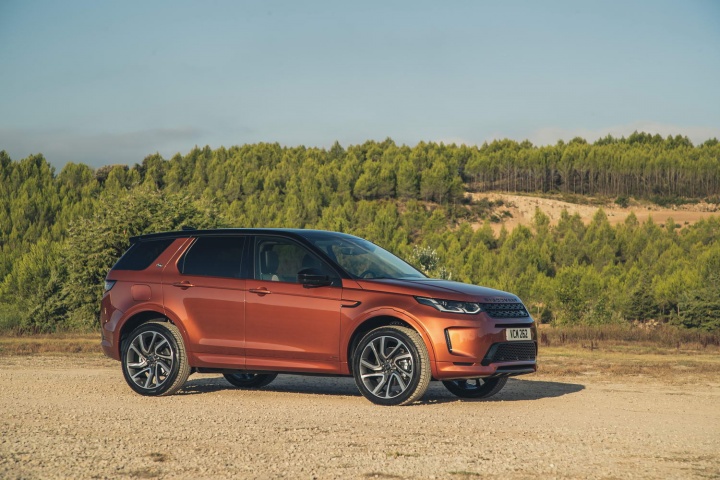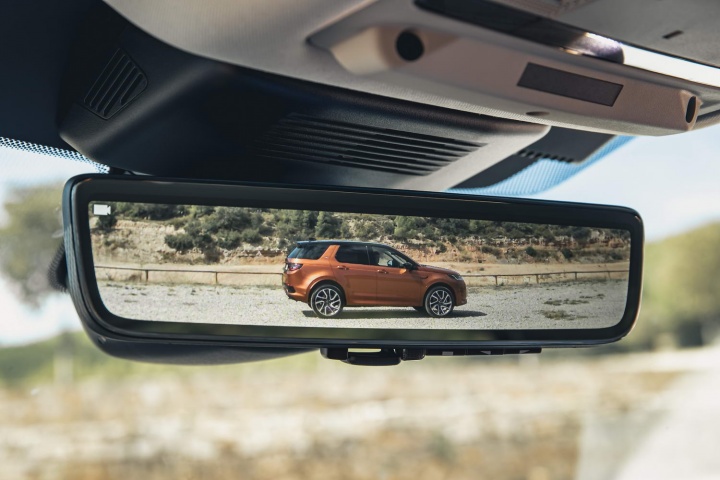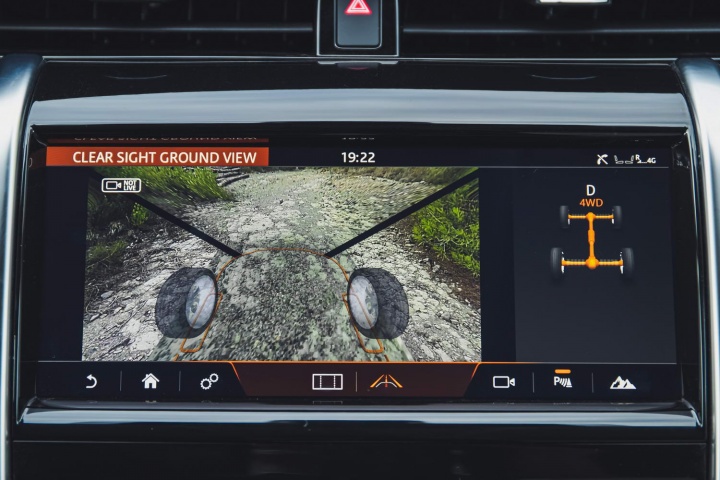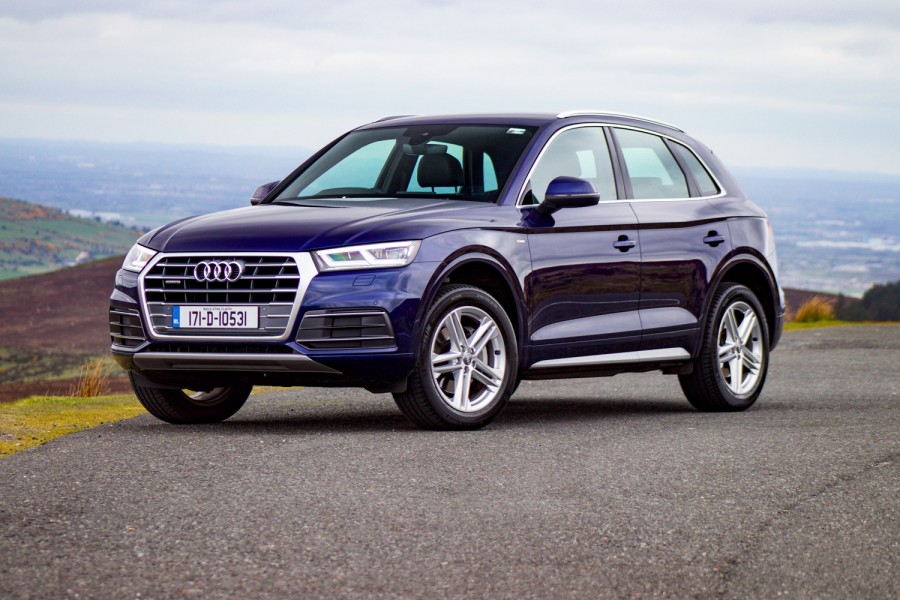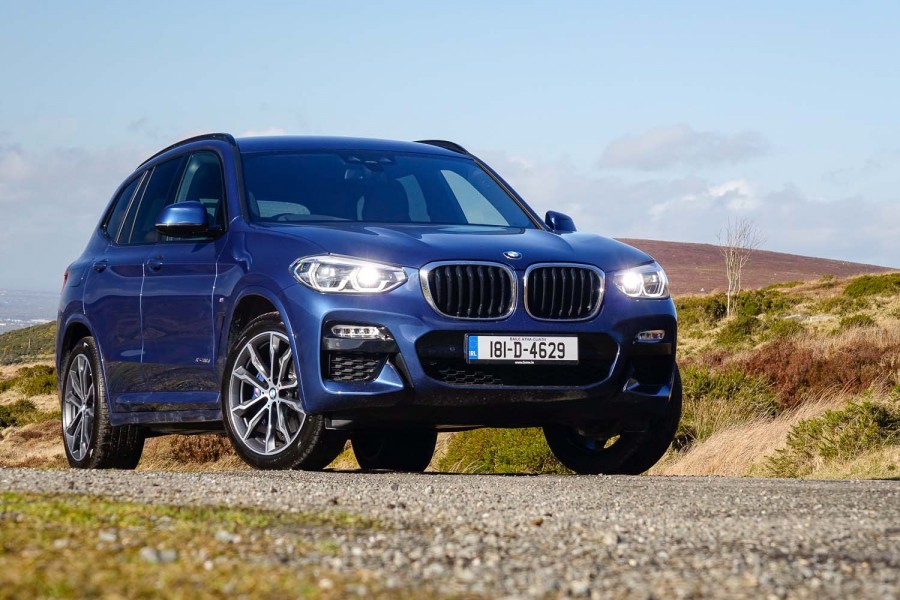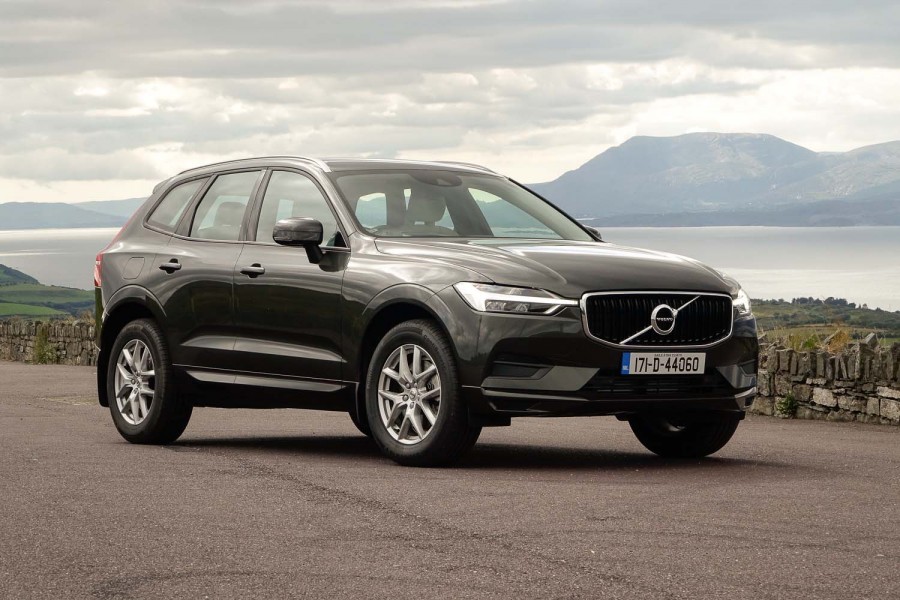Updates to the Land Rover Discovery Sport go beyond the usual mid-cycle facelift; instead they replicate the improvements already seen in the Range Rover Evoque. Gains in fuel efficiency and refinement add to the Discovery Sport's appeal, and it now is better equipped to rival the likes of the Audi Q5 and Volvo XC60 than before.
In the metal
Tweaks to the exterior styling mean that the 2020 Discovery Sport is brought up to date and fits in well with the rest of the Land Rover and Range Rover line-ups. The bonnet, roof and tailgate are carry-over items, but the rest has come in for changes, with its new face complemented by a sharper image thanks to a new headlight design and LED daytime running light signature. A variety of specifications are available, and these can alter the look of the Discovery Sport depending on whether you want a more rugged appearance with black body cladding or a sportier number that we're driving here with up to 21-inch wheels - a first for the model.
The choice between five- or seven-seat options remains, though it's worth noting that even Land Rover refers to the Discovery Sport as a 5+2. That third row is only suitable for smaller children and, when not in use, those third-row seats can fold into the boot floor. All seats get USB charging ports, so there shouldn't be any fighting over who gets to charge up their device in the car. The option of a panoramic glass roof helps to make it feel less cramped in the rear, too.
Of all the updates to the car, it is the interior changes that make the biggest difference. Land Rover's designers described it as a mission to rid the car of hard plastics and the surfaces now appear much nicer and of higher quality. You have to go looking to find any material surfaces that you'd consider feeling cheap. The 10.25-inch screen is well-positioned and below that is a new control panel with similar multifunction rotary controllers that feature in other models like the Range Rover Evoque. It makes for a cleaner and more modern design, and Land Rover has also reverted to a more traditional selector for the automatic transmission, replacing the rotary dial of the previous model.
Other enhancements include a new (to Discovery Sport) steering wheel with capacitive display buttons, and the option of a fully digital 12.3-inch instrument screen, in addition to a detailed head-up display, keep things up to date on the tech front. These latter two are expensive options, but if you like your technology, then you may see value in having them. Other beneficial items include an optional wireless charging pad at the base of the centre console and Land Rover's innovative Clear Sight camera system.
Driving it
Part of the updates to this Discovery Sport include a new range of engines that are almost entirely electrified with a mild hybrid system. Only the base D150 engine goes without it, and that's also the only engine available with a manual gearbox. The rest of the line-up features nine-speed automatic transmissions with all-wheel drive. The 48-volt mild-hybrid system uses a 200Wh battery pack to support the ancillary systems. Although the integrated starter-generator doesn't fully power the vehicle electrically, it can provide up to 140Nm of 'torque fill' to the engine during acceleration. It also means that the engine start-stop is noticeably smoother and it can shut off the engine from 17km/h as you coast to a stop. That contributes to a saving, Land Rover says, of six per cent in fuel consumption and an 8g/km reduction in the CO2 emissions rating. A plug-in hybrid model is due to go on sale in 2020.
The other benefit of these updates to the engine is that it adds a further degree of refinement to the driving experience. We had, in the past, been somewhat critical of the sometimes-uncouth nature of the diesel 'Ingenium' engines across the Jaguar Land Rover range. Now, they not only run more smoothly, but there is a noticeable improvement in reduced noise levels within the cabin. Changes to the chassis design add more stiffness in the right places and reduce how much noise and vibration is transmitted through to the cabin. It's during harder acceleration and when driving at higher motorway speeds that you notice these improvements the most. Other layout changes have allowed the fitment of a larger fuel tank on the diesel versions (holding 65 litres), increasing the potential driving range between fill-ups. Also changed is the location of the filler for the AdBlue system. Previously owners had to lift the bonnet, but now topping it up is done through a dedicated filler next to the fuel cap, making it an easier task. In doing this, engineers were also able to increase the size of the AdBlue tank, extending the period between refills.
Driving around towns and cities highlights the nine-speed auto's smoothness and, for the most part, it works up and down through the gear ratios without fuss. That wide spread of torque, helped partly by the MHEV (Mild Hybrid Electric Vehicle) system, enables the Discovery Sport to get up to speed more easily when joining a motorway, for example. Aside from the handful of dedicated off-road modes, there is also an Eco setting to help stretch out that driving range. Land Rover pitches the Discovery Sport as a competent all-rounder and, while it might not seem as sporty to drive as its more stylish sibling, the Range Rover Evoque, it is now every bit as refined.
What you get for your money
There are a total of eight different specification grades in the Discovery Sport line-up. These range from a relatively basic version to range-topping R-Dynamic models that come with sportier styling and are dripping in equipment. Another plus of the Discovery Sport is that it's the only model among its premium rivals to offer a third row of seats. As we mentioned, it isn't spacious in the third row, but the extra seats are there if you need them. Spend any amount of time on the online configurator and you'll see how quickly you can ratchet up the price of a Discovery Sport. That said, Land Rover does offer several package upgrades that group together similar items for better value.
Summary
With so many changes being applied to the Land Rover Discovery Sport, it goes beyond being a mere model update, seeming more like a new model when everything is taken into consideration. It maintains its practical elements without sacrificing on the style front, which is something that will be important to many buyers in this part of the market. If you have only occasional need for the extra seats, and you value the added security that an advanced all-wheel drive system can offer, then you ought to take a look at the Discovery Sport.

